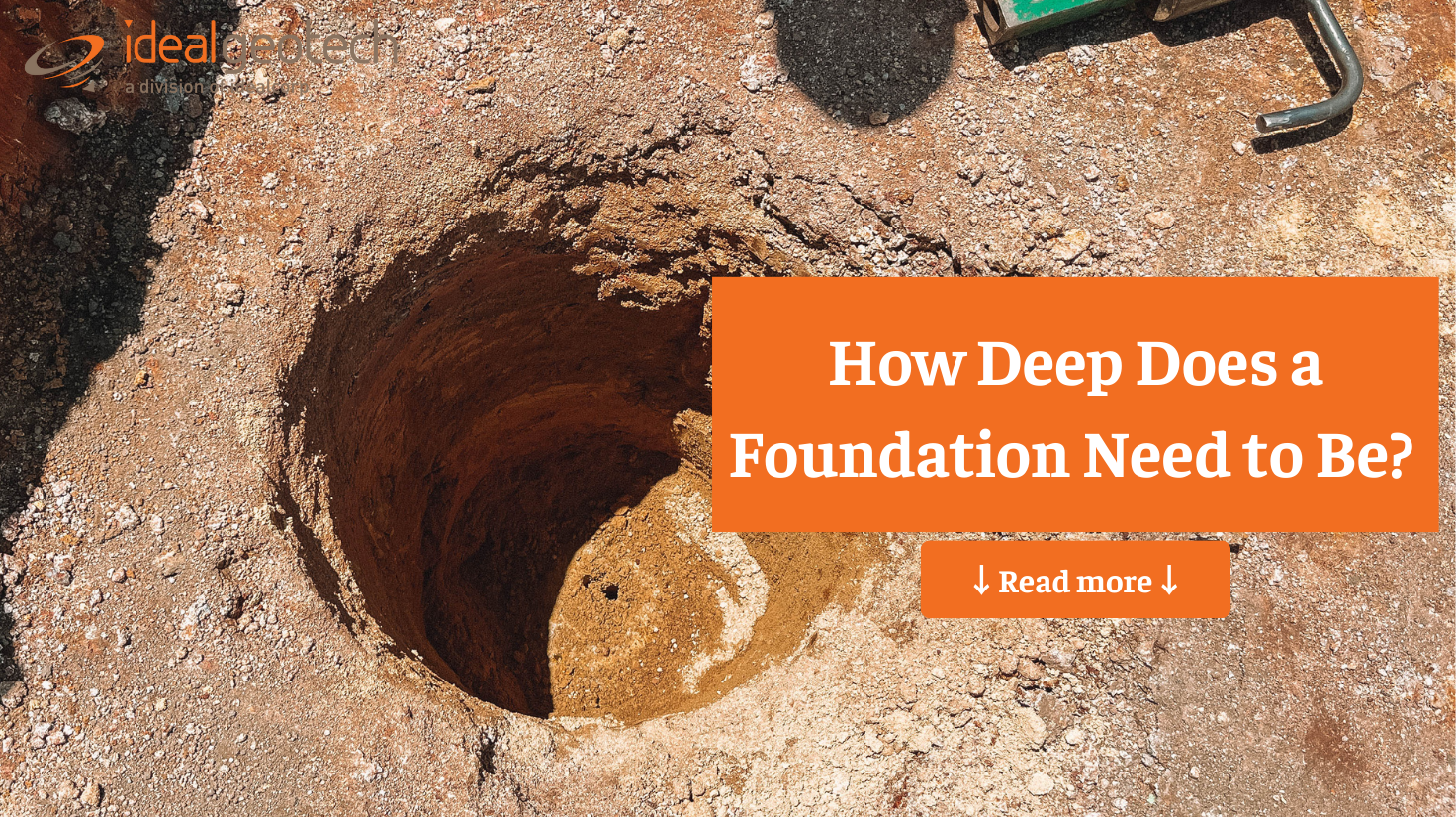When constructing a building, one of the most critical aspects to consider is the depth of its foundation. How deep does a foundation need to be? The required depth can significantly impact the stability, durability, and safety of the entire structure. The answer depends on various factors, including the type of structure, the soil conditions, and environmental influences such as frost lines or water tables.
1. Why Foundation Depth Matters
Foundation depth is vital for several reasons. Primarily, it ensures that a building’s weight is distributed evenly across the ground, preventing uneven settlement that could lead to structural damage. A properly designed foundation depth safeguards the long-term stability of the building by anchoring it securely to the ground, thereby reducing the risk of movement or collapse.
In Australia, where soil types and climate conditions vary widely, ensuring that the foundation is deep enough to withstand local environmental conditions is crucial. So, how deep does a foundation need to be to avoid issues like frost heave in colder regions or water infiltration in areas with a high water table? The correct foundation depth addresses these concerns and ensures a stable structure.
2. Factors Influencing Foundation Depth
Several factors influence how deep a foundation needs to be. These include the type of structure being built, the soil conditions at the site, and specific environmental factors that may affect the stability of the foundation.
a. Type of Structure
The type of structure plays a significant role in determining how deep a foundation needs to be:
- Residential Buildings: Typically, houses and smaller residential buildings require shallower foundations. In most cases, a foundation depth of 900mm to 1200mm (approximately 3 to 4 feet) is sufficient. This depth is adequate because the loads are generally lighter, and the soil conditions in residential areas are often stable.
- Commercial Buildings: Larger and heavier commercial buildings, such as offices or retail spaces, often require deeper foundations. These structures may need foundation depths ranging from 1200mm to 3000mm (approximately 4 to 10 feet) to support the greater loads and to reach stable soil layers.
- Industrial Buildings: Industrial facilities, especially those housing heavy machinery or equipment, may necessitate very deep foundations. In some cases, the depth of these foundations can exceed 3000mm (10 feet) to ensure that the building can safely accommodate the significant weight and operational vibrations.
b. Soil Conditions
The type of soil at the construction site is another critical factor in determining how deep a foundation needs to be:
- Stable Soils: Soils like gravel and sand are generally stable and can support buildings with shallower foundations. These soils provide good drainage and have minimal shrink-swell potential, making them ideal for standard foundation depths.
- Unstable Soils: Soils such as clay or silt are more challenging to work with due to their tendency to shift, expand, or contract with moisture changes. In these cases, deeper foundations may be required to reach more stable strata below the problematic soil layers. Techniques like piling may also be necessary to ensure stability.
c. Environmental Factors
Environmental conditions can greatly influence how deep a foundation needs to be:
- Frost Line: In regions with colder climates, it’s essential to place foundations below the frost line to prevent frost heave. Frost heave occurs when the soil expands due to freezing, potentially causing the foundation to lift and crack. In Australia, this typically requires foundations to be at least 900mm to 1200mm (3 to 4 feet) deep, although the exact depth can vary depending on the location.
- Water Table: High water tables present another challenge. If the water table is close to the surface, it can lead to water-related issues like flooding or soil erosion around the foundation. To mitigate these risks, foundations might need to be deeper to avoid water infiltration and ensure long-term stability.
3. Types of Foundations and Their Depth Requirements
Different types of foundations are used depending on the specific requirements of the structure and the site conditions. Below are some common foundation types and their typical depth requirements:
a. Shallow Foundations
- Strip Footings: Commonly used in load-bearing wall constructions, strip footings are generally placed at a depth of 900mm to 1200mm (3 to 4 feet). They provide a continuous base for the walls, distributing the load evenly.
- Pad Foundations: These are isolated foundations typically used to support individual columns. Pad foundations are usually around 900mm (3 feet) deep, depending on the load they need to support and the soil conditions.
b. Deep Foundations
- Pile Foundations: Pile foundations involve driving long, slender columns (piles) deep into the ground to reach stable soil layers. These foundations are often necessary when building on weak or expansive soils and can exceed 3000mm (10 feet) in depth. Piles transfer the building load to deeper, more stable strata.
- Pier Foundations: Similar to piles but typically shorter, pier foundations are used when the load needs to be distributed at a greater depth than shallow foundations can provide. These are often used in areas where the surface soil is too weak to support a structure.
c. Specialised Foundations
- Basement Foundations: Basement foundations are a combination of shallow and deep foundations. They extend several feet below ground level, providing additional space as well as increased stability. These foundations are typically used in residential or commercial buildings that require extra living or storage space below ground.
- Raft Foundations: Raft foundations, also known as mat foundations, are used in areas with unstable soils. They spread the load of the building over a large area, reducing the stress on any single point. Raft foundations are generally 1200mm to 1800mm (4 to 6 feet) deep and are commonly used for buildings constructed on clay soils or areas prone to subsidence.
4. Conclusion
How deep does a foundation need to be? Determining the correct depth for a foundation is a complex process influenced by multiple factors, including the type of structure, soil conditions, and environmental factors. For most residential buildings in Australia, a foundation depth of 900mm to 1200mm (3 to 4 feet) is usually sufficient. However, commercial and industrial buildings often require much deeper foundations to ensure stability and safety.
Consulting with a structural engineer is crucial to ensure that the foundation depth is adequate for your specific project. Engineers can assess the site conditions and recommend the best foundation type and depth, ensuring your building is secure and compliant with all relevant standards.
Ready to start your construction project? Trust Ideal Geotech to ensure your foundations are built to last. Our experienced team provides tailored solutions to meet your specific needs. Contact Ideal Geotech today for a consultation and take the first step towards a secure and stable building foundation.







